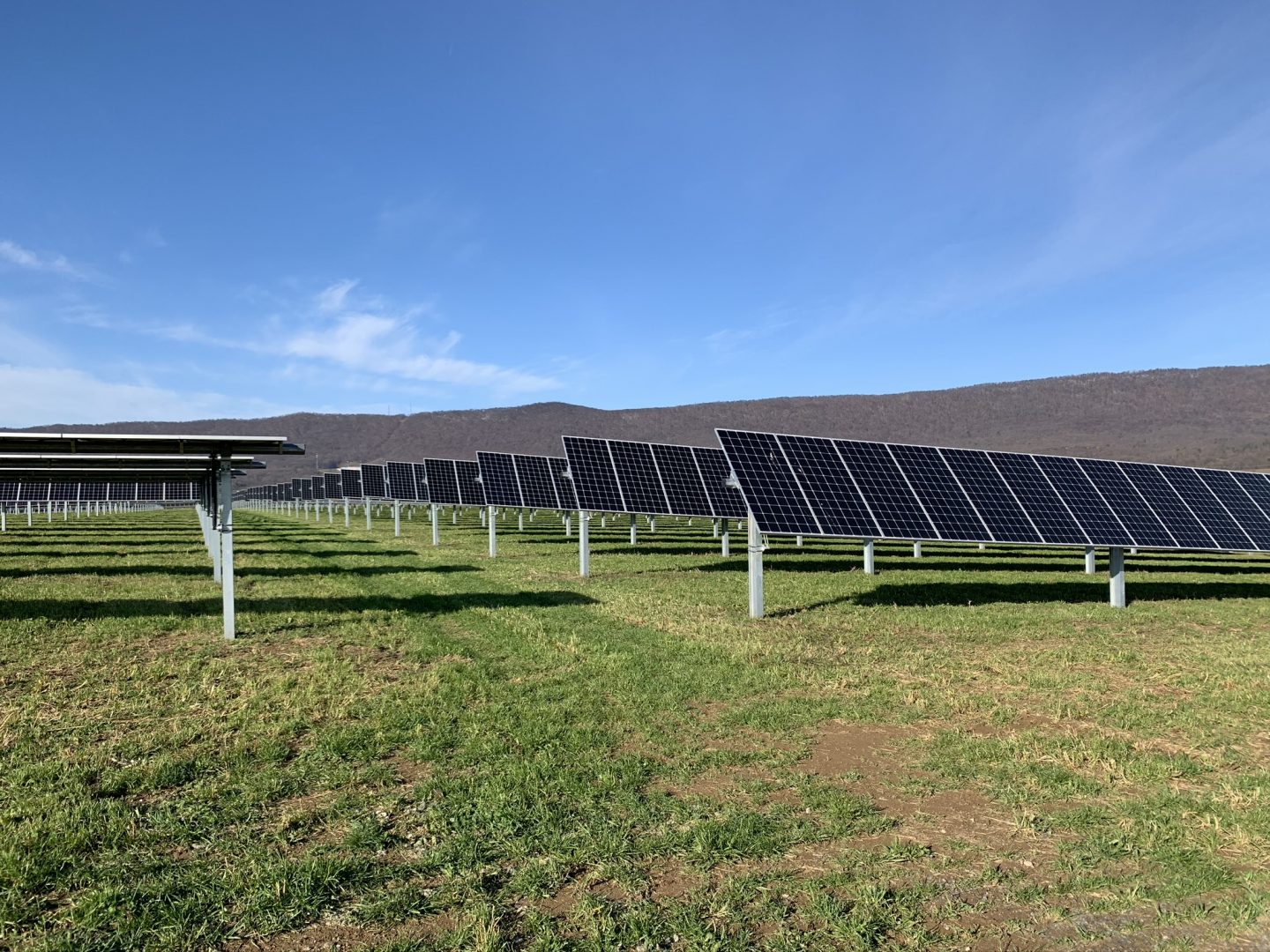
This solar field in Lurgan Township, Franklin County provides power to Penn State. Panels are seen here on Nov. 24, 2020.
Rachel McDevitt / StateImpact Pennsylvania


This solar field in Lurgan Township, Franklin County provides power to Penn State. Panels are seen here on Nov. 24, 2020.
Rachel McDevitt / StateImpact Pennsylvania

Rachel McDevitt / StateImpact Pennsylvania
This solar field in Lurgan Township, Franklin County provides power to Penn State. Panels are seen here on Nov. 24, 2020.
PJM Interconnection is changing how it approves new electricity projects, intending to speed up the process–and that could bring economic benefits to Pennsylvania, according to a renewable energy advocacy group.
PJM is the regional transmission organizer for 13 states in the mid-Atlantic region and Washington, D.C. Previously, it approved new connection requests by a first-come, first-served basis. Beginning July 10, the company will look at projects based on how ready they are to connect to the grid, dubbed “first-ready, first-served.”
The American Council on Renewable Energy says PJM’s old policy led to an average seven- year wait time. Renewable projects pay, according to ACORE policy analyst Noah Strand, “disproportionately high upgrade costs” compared to fossil fuel projects, and those costs are sometimes not assigned until later in the study.
“This has caused in many cases commercially-ready renewable projects active in the queue to become economically unviable and withdraw,” Strand said.
The withdrawals trigger more re-studies and lengthen wait times.
ACORE said because of the lengthy queue process, only about 3 percent of projects were completed between Jan. 1, 2017-March 31, 2018. PJM expects the procedural change will help speed up service connections, inform project costs, and improve installing upgrades to the grid.
About 8 in 10 of the more than 2,600 projects in the queue now are from renewable sources. ACORE said that between 2011-2016, about 1 in 5 projects were completed — and said at that rate, about 500 projects would come online within four years, accounting for about 34 gigawatts of renewable energy that could power more than 25 million homes.
The renewable energy projects would also bring economic benefits, ACORE says. They report estimates Pennsylvania would add more than $3 billion in capital investment and over 19,000 job-years, calculated as the equivalent of one full time job held for one year based on industry averages. Those jobs are just in the construction, operation, and maintenance of the projects. Indirect jobs and economic revenue from tax payments could bring in additional money.
PJM said it also increased staffing and outside contractors to speed their transition and move projects through their queue. The company released a tool, Queue Scope, which it says enables developers to “better assess the engineering and financial impacts of a project at various locations on their own before they formally enter PJM’s interconnection queue.” PJM says that will save them time and money, particularly smaller developers.
During a news conference detailing their report, ACORE talked about recommendations for both PJM and the Federal Energy Regulatory Commission to better prepare the industry for more renewable energy development. It calls for better transmission planning and improvements to address insufficient capacity for the transmission of renewable power, and recommends the use of grid-enhancing technologies.
Dana Ammann from the Natural Resources Defense Council said transmission planning will be one of the most important things in the next decade of energy transition.
“The reality of the PJM transmission system is that it’s built out with these piecemeal projects that are identified through the queue process. Those projects could be met with longer, bigger lines that have additional benefits on top of the ones that are realized through the smaller projects,” she said, emphasizing the importance of states to communicate with PJM their interest in transmission upgrades.
ACORE also recommended the FERC oversee funding reforms to better distribute costs across grid users. Right now, the group says the upgrade costs are falling mostly on incoming renewable energy projects, making many projects financially impossible to complete.
PJM said its transition to the new system will be complete by 2026, during which time it will review existing projects in the queue and clear the backlog.
StateImpact Pennsylvania is a collaboration among WITF, WHYY, and the Allegheny Front. Reporters Reid Frazier, Rachel McDevitt and Susan Phillips cover the commonwealth’s energy economy. Read their reports on this site, and hear them on public radio stations across Pennsylvania.
(listed by story count)
StateImpact Pennsylvania is a collaboration among WITF, WHYY, and the Allegheny Front. Reporters Reid Frazier, Rachel McDevitt and Susan Phillips cover the commonwealth’s energy economy. Read their reports on this site, and hear them on public radio stations across Pennsylvania.
Climate Solutions, a collaboration of news organizations, educational institutions and a theater company, uses engagement, education and storytelling to help central Pennsylvanians toward climate change literacy, resilience and adaptation. Our work will amplify how people are finding solutions to the challenges presented by a warming world.